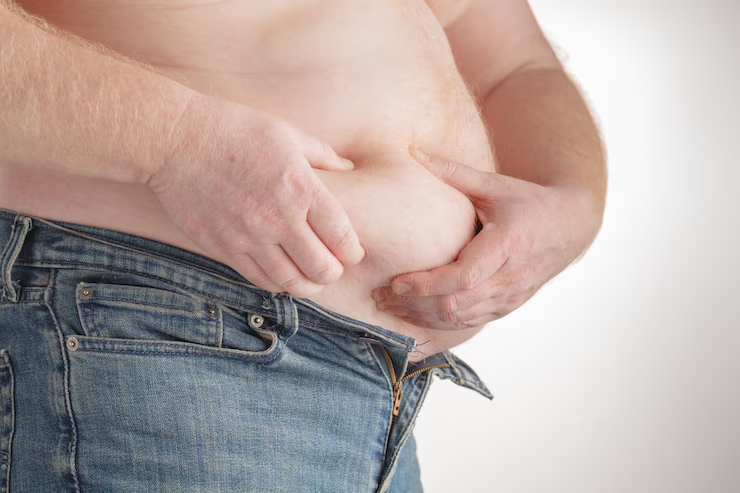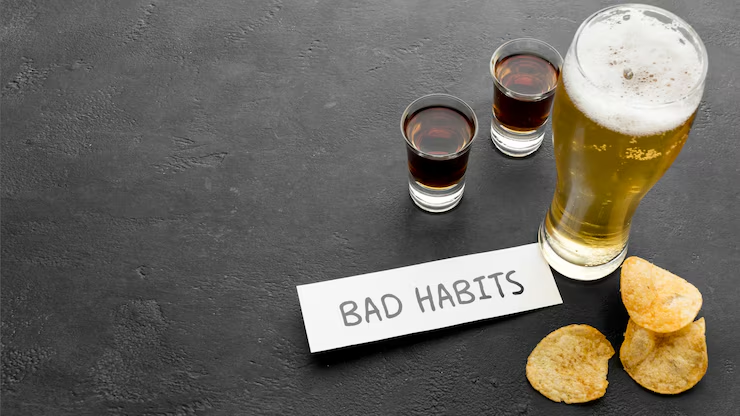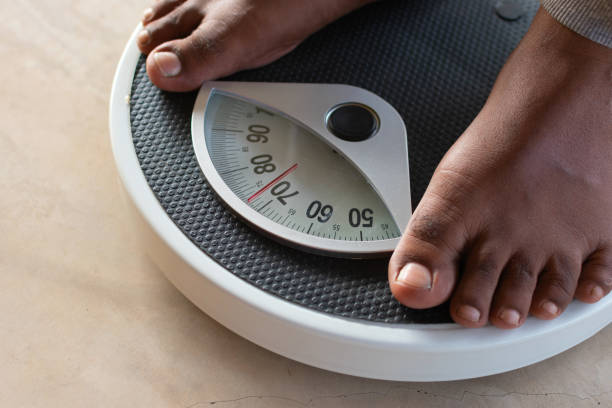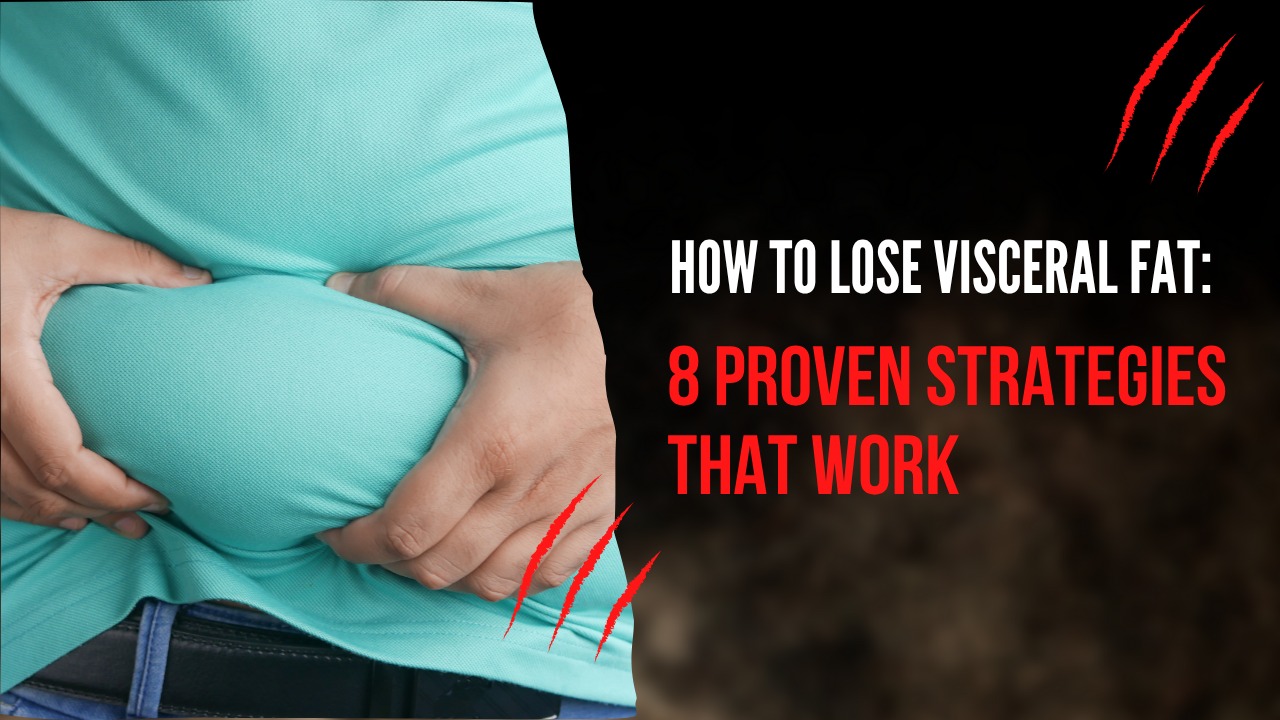Visceral fat is a hidden type of fat stored deep inside the belly, surrounding important organs such as the liver, pancreas, and intestines. Unlike the fat you can feel just under the skin, visceral fat is not visible, making it more dangerous. Its deep location in the abdominal cavity allows it to interfere with the function of vital organs.
In today’s fast-paced world, many people focus more on their busy schedules than their health. Poor eating habits, lack of exercise, and high stress levels often lead to the buildup of visceral fat. Because it develops quietly over time, most people are unaware of its presence until serious health issues arise.
This invisible fat is linked to a higher risk of heart disease, type 2 diabetes, high blood pressure, and certain cancers. Reducing visceral fat through a healthy diet, regular physical activity, and stress management is crucial for long-term well-being.
This guide will not only explain what visceral fat is and why it matters, but also walk you through eight powerful, science-backed strategies to eliminate it safely and effectively.
What Is Visceral Fat ?

Visceral fat, often called “intra-abdominal fat,” is different from the fat you can feel under your skin, known as subcutaneous fat. While both types are stored in the body, visceral fat is located deep inside the belly, surrounding organs like the liver and pancreas. This hidden fat can quietly build up over time and pose serious health risks.
One key reason why visceral fat is more dangerous is that it’s biologically active. Unlike subcutaneous fat, which mainly stores energy, visceral fat releases chemicals that affect how your body works. It produces inflammatory substances called cytokines that can raise the risk of chronic inflammation, insulin resistance, and other metabolic problems.
Even if your stomach appears flat, you may still have high levels of visceral fat. This is why it’s so dangerous—it can’t always be measured by appearance or weight. It hides beneath the surface and affects your body from the inside.
Understanding how to lose visceral fat is essential for protecting your health. Eating a balanced diet, staying physically active, managing stress, and getting enough sleep are all effective ways to reduce visceral fat and support long-term well-being.
How Visceral Fat Impacts Your Body
Visceral fat acts like a secret saboteur within your body. Its proximity to internal organs makes it uniquely capable of interfering with their normal functions. Here’s how it affects different systems:
Cardiovascular Health Complications
Visceral fat significantly raises the likelihood of developing heart-related diseases. It releases harmful fatty acids, inflammatory agents, and hormones into the bloodstream, which then reach the liver. This process results in the liver producing more low-density lipoprotein (LDL or “bad” cholesterol) and less high-density lipoprotein (HDL or “good” cholesterol). These imbalances contribute to elevated blood pressure, hardening of the arteries (atherosclerosis), and an increased risk of heart attacks.
Impairment of Insulin Function and Diabetes Risk
One of the major dangers of visceral fat is its interference with insulin, the essential hormone responsible for controlling blood sugar levels. The inflammatory substances secreted by this fat contribute to insulin resistance, a condition that often leads to type 2 diabetes. Understanding how to lose visceral fat is vital for preventing such metabolic disorders.
Disruption of Hormonal Regulation
Visceral fat can upset the body’s hormonal balance by increasing the levels of cortisol (commonly known as the stress hormone) and estrogen. These hormonal changes can promote additional fat accumulation, particularly among women experiencing menopause, further complicating weight management efforts.
Negative Effects on Liver Health
There is a strong link between visceral fat and non-alcoholic fatty liver disease (NAFLD). Excess fat surrounding the liver hampers its ability to filter toxins and regulate key metabolic functions, potentially leading to long-term liver damage. Addressing how to lose visceral fat is crucial for preserving liver health.
Elevated Cancer Susceptibility
Research indicates that individuals with high levels of visceral fat are more prone to developing various forms of cancer, including breast and colorectal cancers. This type of fat creates an environment of chronic inflammation and hormonal shifts that may foster the development of malignant cells. Learning how to lose visceral fat is essential for lowering this cancer risk.
Top 8 Strategies to Lose Visceral Fat
Losing visceral fat requires a multi-faceted approach. There is no “magic bullet,” but consistent and holistic lifestyle changes can yield powerful results. Here are the top 8 strategies to help you tackle visceral fat effectively.
Adopt a Whole-Food, Low-Sugar Diet

Diet plays a key role in managing and reducing visceral fat. The food choices you make daily have a strong effect on your body’s ability to store or burn fat. Poor eating habits, especially those involving processed and sugary foods, can encourage the buildup of hidden fat around vital organs.
Refined sugars and trans fats are especially harmful. These ingredients raise inflammation levels in the body and promote fat storage deep in the belly. They also lead to unstable blood sugar levels, which can trigger insulin resistance—a major factor in visceral fat gain.
Understanding how to lose visceral fat begins with improving your diet. Eating more whole foods like vegetables, fruits, whole grains, lean proteins, and healthy fats helps stabilize blood sugar. These nutrient-rich foods support your metabolism, reduce inflammation, and limit the chances of storing excess fat in the abdominal area.
What to Do:
Eliminate processed foods, refined carbs, and sugary drinks.
Focus on whole grains, lean proteins, healthy fats, vegetables, and fruits.
Include fiber-rich foods like legumes, oats, and chia seeds.
Engage in Regular Cardio and Strength Training
Why It Works:
Exercise is an important part of any plan to lose visceral fat. It not only helps you burn calories but also supports your heart and overall health. Regular physical activity keeps your body active and boosts your metabolism throughout the day.
Cardiovascular exercises like walking, jogging, and cycling increase your heart rate and help burn calories efficiently. On the other hand, resistance training builds lean muscle mass, which uses more energy—even when you’re not exercising. This helps in reducing fat stored deep in the belly over time.
If you’re wondering how to lose visceral fat effectively, High-Intensity Interval Training (HIIT) is a great option. HIIT combines short bursts of intense activity with short rest periods, and studies show it is especially powerful in targeting visceral fat. Adding both cardio and strength training into your routine gives the best results.
What to Do:
Aim for at least 150 minutes of moderate aerobic activity per week (e.g., brisk walking, cycling).
Include strength training exercises 2–3 times per week to build muscle and boost metabolism.
Improve Sleep Quality

Getting enough quality sleep is important for controlling body fat, especially visceral fat. When sleep is poor or limited, it can upset the balance of hormones that control hunger and stress. This makes it harder for the body to stay healthy and manage weight.
Lack of sleep raises cortisol, the stress hormone, which encourages fat storage around the belly. It also increases ghrelin, a hormone that makes you feel hungrier. These changes can lead to overeating, poor food choices, and more fat building up around your organs.
If you’re looking for tips on how to lose visceral fat, improving your sleep should be a top priority. Aim for 7 to 9 hours of good-quality sleep each night. A regular sleep schedule, a quiet environment, and relaxing before bed can help support better sleep and reduce fat over time.
What to Do:
Aim for 7–9 hours of quality sleep each night.
Maintain a regular sleep schedule and avoid screen time before bed.
Reduce Stress and Cortisol Levels
Chronic stress can have a serious impact on your body, especially when it comes to fat storage. When you’re under constant stress, your body produces more cortisol, a hormone that plays a big role in storing fat around the belly area. This type of fat is called visceral fat and can quietly harm your health over time.
High cortisol levels not only increase fat storage but also make it harder to stick to healthy habits. Stress often leads to emotional eating and poor food choices, which can lead to even more weight gain. This cycle makes it tough to manage or reduce visceral fat.
Learning how to lose visceral fat includes managing stress effectively. Simple steps like daily relaxation, deep breathing, meditation, or spending time doing things you enjoy can help lower cortisol. When stress is reduced, your body responds better to diet and exercise efforts.
What to Do:
Practice mindfulness, meditation, yoga, or deep breathing exercises.
Avoid multitasking, and schedule downtime to relax each day.
Limit Alcohol Consumption

Alcohol can play a major role in the buildup of visceral fat. When you drink, your liver works to break down the alcohol first, putting fat processing on hold. This can lead to fat being stored in the abdominal area, especially around the internal organs.
Alcohol is also full of empty calories that offer no real nutritional value. Drinking regularly adds extra calories to your diet, which can easily lead to weight gain over time. On top of that, alcohol lowers self-control, making you more likely to overeat or choose unhealthy foods.
If you’re focused on how to lose visceral fat, cutting back on alcohol is an important step. Reducing or avoiding alcohol helps your liver function better, limits excess calorie intake, and supports healthier eating habits. This makes it easier to manage your weight and reduce harmful belly fat.
What to Do:
Stick to moderate drinking: no more than 1 drink per day for women and 2 for men.
Consider abstaining for a month to reset your system and gauge its effects.
Increase Daily Movement (NEAT)
Non-exercise activity thermogenesis (NEAT) includes all the calories your body burns from daily movements that aren’t part of planned workouts. This includes walking around the house, cleaning, gardening, taking the stairs, or even fidgeting. These small actions can add up and play a big role in overall calorie burn.
Unlike formal exercise, NEAT fits naturally into your day and doesn’t require a gym or equipment. By being more active throughout the day—like standing instead of sitting, walking while talking on the phone, or doing light chores—you can increase your daily energy use without intense effort.
If you’re looking for tips on how to lose visceral fat, increasing NEAT is a smart and simple strategy. These extra movements help burn more calories, support a healthy metabolism, and make it easier to manage or reduce fat stored deep in the belly area.
What to Do:
Take the stairs, stand more, walk during phone calls, or use a standing desk.

Aim for 10,000 steps per day.
Optimize Gut Health
A healthy gut microbiome plays a key role in how your body processes food and manages weight. The gut is home to trillions of bacteria that help with digestion, nutrient absorption, and immune support. When these bacteria are balanced, they support a healthy metabolism and reduce inflammation.
However, an imbalance in gut bacteria—often caused by poor diet, stress, or illness—can lead to problems like bloating, poor digestion, and insulin resistance. These issues may cause your body to store more fat, especially around the belly area, where visceral fat builds up.
Understanding how to lose visceral fat includes taking care of your gut health. Eating fiber-rich foods, fermented products like yogurt or kefir, and avoiding processed foods can improve gut balance. A healthy gut can support better digestion, lower inflammation, and help reduce deep belly fat over time.
What to Do:
Eat fermented foods like yogurt, kefir, kimchi, and sauerkraut.
Consider a high-quality probiotic supplement.
Monitor Progress Beyond the Scale
Traditional bathroom scales only show total body weight, but they don’t reveal how much of that weight is harmful fat. One of the biggest concerns is visceral fat, which builds up deep inside the belly. You can’t see it or pinch it, and it can exist even in people who appear slim on the outside.
This condition is known as TOFI—Thin Outside, Fat Inside. People with TOFI may look healthy but still carry dangerous levels of visceral fat around their organs. Because of this, relying only on weight isn’t enough to assess your health or fat levels.
If you’re learning how to lose visceral fat, tracking waist circumference and body composition is more helpful. Measuring your waist or using a body scan can give a better view of fat distribution. These methods help you stay on track and monitor true health progress.

What to Do:
Track waist circumference (goal: below 35 inches for women, 40 inches for men).
Use a body composition scale or get a DEXA scan.
How Long Does It Take to Lose Visceral Fat ?
The good news is that visceral fat is often the first to go when you begin making healthy changes. With consistent effort:
Measurable changes may appear in as little as 2–4 weeks.
Significant reductions can take 3–6 months, depending on starting levels.
Remember, this is not about crash dieting or quick fixes. The goal is sustainable fat loss that improves your health long-term.
Conclusion

In conclusion, understanding how to lose visceral fat is essential for improving not just your appearance, but your overall health and longevity. Unlike subcutaneous fat, visceral fat poses serious risks by surrounding vital organs and disrupting metabolic functions. Fortunately, with consistent lifestyle changes—such as adopting a nutritious diet, exercising regularly, managing stress, and getting quality sleep—you can significantly reduce visceral fat levels. Small daily habits, when maintained over time, lead to powerful long-term results.
It’s not about drastic changes or quick fixes, but about sustainable strategies that work together to heal and strengthen your body from within. By focusing on these proven methods, you can protect yourself from chronic diseases and feel more energized, balanced, and confident. Start implementing these steps today, and take the first step toward a healthier, stronger you. If you’re wondering how to lose visceral fat, the answer lies in commitment and consistency.
FAQs
- What is visceral fat, and why is it dangerous ?
Visceral fat is fat stored deep inside the belly, surrounding vital organs like the liver and intestines. It’s dangerous because it increases the risk of heart disease, type 2 diabetes, and other health problems. - How to lose visceral fat effectively ?
To lose visceral fat, focus on a balanced diet with whole foods, regular physical activity (especially cardio and strength training), quality sleep, and stress management. Reducing alcohol intake also helps. - Can you have visceral fat even if you’re not overweight ?
Yes, even slim individuals can carry visceral fat, a condition known as TOFI (Thin Outside, Fat Inside). That’s why tracking waist size and body composition is important. - Does exercise help reduce visceral fat ?
Yes, both aerobic exercise and strength training are effective. High-Intensity Interval Training (HIIT) is especially helpful in targeting visceral fat. - How long does it take to lose visceral fat ?
Results vary, but with consistent lifestyle changes, you may begin to see improvements within a few weeks. Long-term habits are key in how to lose visceral fat safely and effectively.

